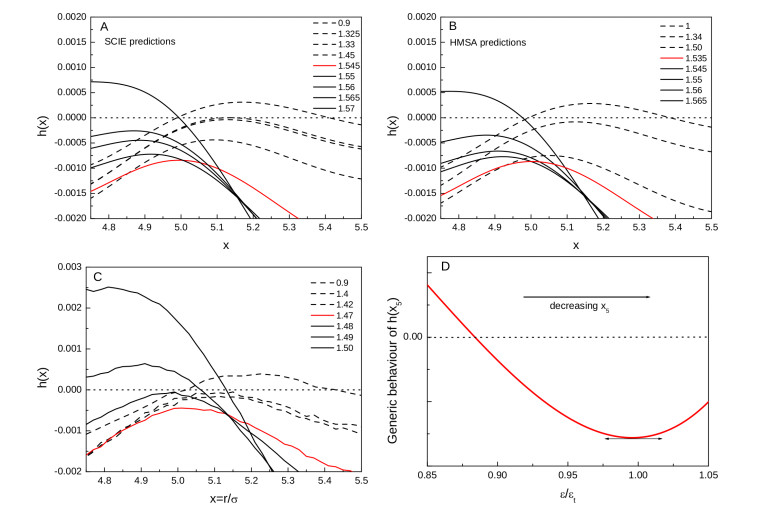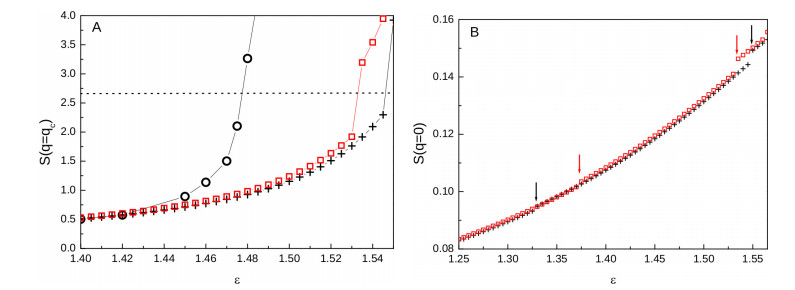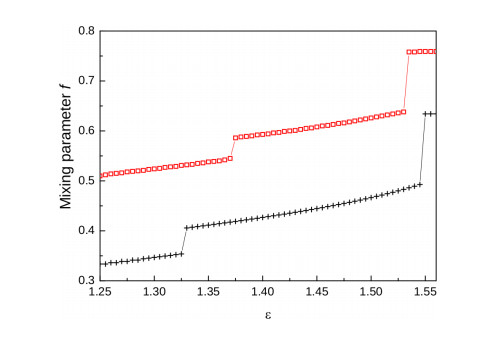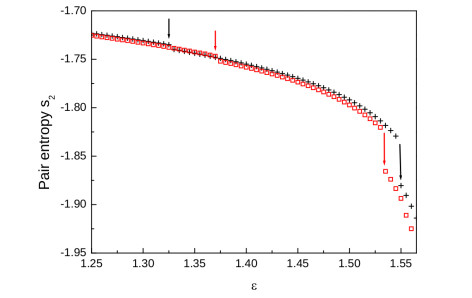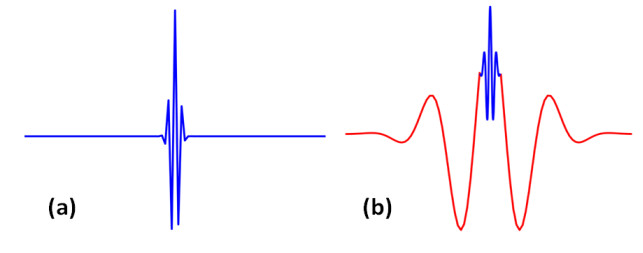|
[1]
|
F. Bray, J. Ferlay and I. Soerjomataram, et al., Global cancer statistics 2018: GLOBOCAN estimates of incidence and mortality worldwide for 36 cancers in 185 countries, CA. Cancer J. Clin., 68 (2018), 394–424.
|
|
[2]
|
M. E. Anderson, M. S. Soo and R. C. Bentley, et al., The detection of breast microcalcifications with medical ultrasound, J. Acoust. Soc. Am., 101 (1997), 29–39.
|
|
[3]
|
R. Baker, K. D. Rogers and N. Shepherd, et al., New relationships between breast microcalcifications and cancer, Br. J. Cancer, 103 (2010), 1034–1039.
|
|
[4]
|
T. Nagashima, H. Hashimoto and K. Oshida, et al., Ultrasound demonstration of mammographically detected microcalcifications in patients with ductal carcinoma in situ of the breast, Breast Cancer, 12 (2005), 216–220.
|
|
[5]
|
S. Obenauer, K. P. Hermann and E. Grabbe, Applications and literature review of the BI-RADS classification, Eur. Radiol., 15 (2005), 1027–1036.
|
|
[6]
|
J. R. Cleverley, A. R. Jackson and A. C. Bateman, Pre-operative localization of breast microcalcification using high-frequency ultrasound, Clin. Radiol., 52 (1997), 924–926.
|
|
[7]
|
L. Frappart, I. Remy and H. C. Lin, et al., Different types of microcalcifications observed in breast pathology. Correlations with histopathological diagnosis and radiological examination of operative specimens, Virchows. Arch. A. Pathol. Anat. Histopathol., 410 (1986), 179–187.
|
|
[8]
|
M. J. Radi, Calcium oxalate crystals in breast biopsies. An overlooked form of microcalcification associated with benign breast disease, Arch. Pathol. Lab. Med., 113 (1989), 1367–1369.
|
|
[9]
|
I. Thomassin-Naggara, A. Tardivon and J. Chopier, Standardized diagnosis and reporting of breast cancer, Diagn. Interv. Imaging, 95 (2014), 759–766.10. P. L. Arancibia, T. Taub and A. López, et al., Breast calcifications: description and classification according to BI-RADS 5th Edition, Rev. Chil. Radiol., 22 (2016), 80–91.
|
|
[10]
|
11. P. Machado, J. R. Eisenbrey and B. Cavanaugh, et al., New image processing technique for evaluating breast microcalcifications: a comparative study, J. Ultrasound Med., 31 (2012), 885–893.
|
|
[11]
|
12. M. Ruschin, B. Hemdal and I. Andersson, et al., Threshold pixel size for shape determination of microcalcifications in digital mammography: A pilot study, Radiat. Prot. Dosimetry., (2005), 415–423.
|
|
[12]
|
13. F. Pediconi, C. Catalano and A. Roselli, et al., The challenge of imaging dense breast parenchyma: is magnetic resonance mammography the technique of choice? A comparative study with x-ray mammography and whole-breast ultrasound, Invest. Radiol., 44 (2009), 4421.
|
|
[13]
|
14. W. T. Yang, M. Suen and A. Ahuja, et al., In vivo demonstration of microcalcification in breast cancer using high resolution ultrasound, Br. J. Radiol., 70 (1997), 685–690.
|
|
[14]
|
15. H. Gufler, C. H. Buitrago-Tellez and H. Madjar, et al., Ultrasound demonstration of mammographically detected microcalcifications, Acta. Radiol., 41 (2000), 217–221.
|
|
[15]
|
16. W. L. Teh, A. R. Wilson and A. J. Evans, et al., Ultrasound guided core biopsy of suspicious mammographic calcifications using high frequency and power Doppler ultrasound, Clin. Radiol., 55 (2000), 390–394.
|
|
[16]
|
17. W. K. Moon, J. G. Im and Y. H. Koh, et al., US of mammographically detected clustered microcalcifications, Radiology, 217 (2000), 849–854.
|
|
[17]
|
18. Y. C. Cheung, Y. L. Wan and S. C. Chen, et al., Sonographic evaluation of mammographically detected microcalcifications without a mass prior to stereotactic core needle biopsy, J. Clin. Ultrasound, 30 (2002), 323–331.
|
|
[18]
|
19. F. Stoblen, S. Landt and R. Ishaq, et al., High-frequency breast ultrasound for the detection of microcalcifications and associated masses in BI-RADS 4a patients, Anticancer Res., 31 (2011), 2575–2581.
|
|
[19]
|
20. W. H. Huang, I. W. Chen and C. C. Yang, et al., The sonogaphy is a valuable tool for diagnosis of microcalcification in screening mammography, Ultrasound Med. Biol., 43 (2017), S28.
|
|
[20]
|
21. L. Huang, Y. Labyed and Y. Lin, et al., Detection of breast microcalcifications using synthetic-aperture ultrasound, SPIE Medical Imaging 2: Ultrasonic Imaging, Tomography, and Therapy, (2012), 83200H.
|
|
[21]
|
22. S. Bae, J. H. Yoon and H. J. Moon, et al., Breast microcalcifications: diagnostic outcomes according to image-guided biopsy method, Korean. J. Radiol., 16 (2015), 996–1005.
|
|
[22]
|
23. T. Fischer, M. Grigoryev and S. Bossenz, et al., Sonographic detection of microcalcifications - potential of new method, Ultraschall. Med., 33 (2012), 357–365.
|
|
[23]
|
24. R. Tan, Y. Xiao and Q. Tang, et al., The diagnostic value of Micropure imaging in breast suspicious microcalcificaion, Acad. Radiol., 22 (2015), 1338–1343.
|
|
[24]
|
25. A. Y. Park, B. K. Seo and K. R. Cho, et al., The utility of MicroPure ultrasound technique in assessing grouped microcalcifications without a mass on mammography, J. Breast Cancer, 19 (2016), 83–86.
|
|
[25]
|
26. N. Kamiyama, Y. Okamura and A. Kakee, et al., Investigation of ultrasound image processing to improve perceptibility of microcalcifications, J. Med. Ultrason., 35 (2008), 97–105.
|
|
[26]
|
27. P. Machado, J. R. Eisenbrey and B. Cavanaugh, et al., Evaluation of a new image processing technique for the identification of breast microcalcifications, Ultrasound Med. Biol., 39 (2013), S87.
|
|
[27]
|
28. P. Machado, J. R. Eisenbrey and B. Cavanaugh, et al., Ultrasound guided biopsy of breast microcalcifications with a new ultrasound image processing technique, Ultrasound Med. Biol., 39 (2013), S41.
|
|
[28]
|
29. P. Machado, J. R. Eisenbrey and B. Cavanaugh, et al., Microcalcifications versus artifacts: Initial evaluation of a new ultrasound image processing technique to identify breast microcalcifications in a screening population, Ultrasound Med. Biol., 40 (2014), 2321–2324.
|
|
[29]
|
30. M. Grigoryev, A. Thomas and L. Plath, et al., Detection of microcalcifications in women with dense breasts and hypoechoic focal lesions: Comparison of mammography and ultrasound, Ultraschall. Med., 35 (2014), 554–560.
|
|
[30]
|
31. P. Machado, J. R. Eisenbrey and M. Stanczak, et al., Ultrasound detection of microcalcifications in surgical breast specimens, Ultrasound Med. Biol., 44 (2018), 1286–1290.
|
|
[31]
|
32. P. Machado, J. R. Eisenbrey and M. Stanczak, et al., Characterization of breast microcalcifications using a new ultrasound image-processing technique, J. Ultrasound Med., (2019), In press, doi: 10.1002/jum.14861.
|
|
[32]
|
33. R. F. Chang, S. F. Huang and L. P. Wang, et al., Microcalcification detection in 3-D breast ultrasound, 27th Annual International Conference of the IEEE Engineering in Medicine and Biology Society, (2005), 6297–6300.
|
|
[33]
|
34. R. F. Chang, Y. L. Hou and C. S. Huang, et al., Automatic detection of microcalcifications in breast ultrasound, Med. Phys., 40 (2013), 102901.
|
|
[34]
|
35. B. H. Cho, C. Chang and J. H. Lee, et al., Fast microcalcification detection in ultrasound images using image enhancement and threshold adjacency statistics, SPIE Medical Imaging 2013: Computer-Aided Diagnosis, (2013), 86701Q.
|
|
[35]
|
36. M. S. Islam, Microcalcifications detection using image and signal processing techniques for early detection of breast cancer, Ph.D. Dissertation, University of North Dakota, Grand Forks, North Dakota, USA, (2016).
|
|
[36]
|
37. B. Zhuang, T. Chen and C. Leung, et al., Microcalcification enhancement in ultrasound images from a concave automatic breast ultrasound scanner, 2012 IEEE International Ultrasonics Symposium (IUS), (2012), 1662–1665.
|
|
[37]
|
38. J. Ophir, I. Cespedes and H. Ponnekanti, et al., Elastography: A quantitative method for imaging the elasticity of biological tissues, Ultrason. Imaging, 13 (1991), 111–134.
|
|
[38]
|
39. K. J. Parker, M. M. Doyley and D. J. Rubens, Imaging the elastic properties of tissue: The 20 year perspective, Phys. Med. Biol., 56 (2011), R1–R29.
|
|
[39]
|
40. R. G. Barr, K. Nakashima and D. Amy, et al., WFUMB guidelines and recommendations for clinical use of ultrasound elastography: Part 2: breast, Ultrasound Med. Biol., 41 (2015), 1148–1160.
|
|
[40]
|
41. J. Carlsen, C. Ewertsen and S. Sletting, et al., Ultrasound elastography in breast cancer diagnosis, Ultraschall. Med., 36 (2015), 550–562.
|
|
[41]
|
42. K. H. Ko, H. K. Jung and S. J. Kim, et al., Potential role of shear-wave ultrasound elastography for the differential diagnosis of breast non-mass lesions: preliminary report, Eur. Radiol., 24 (2014), 305–311.
|
|
[42]
|
43. J. M. Chang, J. K. Won and K. B. Lee, et al., Comparison of shear-wave and strain ultrasound elastography in the differentiation of benign and malignant breast lesions, AJR. Am. J. Roentgenol., 201 (2013), W347–W356.
|
|
[43]
|
44. M. Fatemi, L. E. Wold and A. Alizad, et al., Vibro-acoustic tissue mammography, IEEE. Trans. Med. Imaging, 21 (2002), 1–8.
|
|
[44]
|
45. A. Alizad, M. Fatemi and L. E. Wold, et al., Performance of vibro-acoustography in detecting microcalcifications in excised human breast tissue: a study of 74 tissue samples, IEEE. Trans. Med. Imaging, 23 (2004), 307–312.
|
|
[45]
|
46. A. Alizad, D. H. Whaley and J. F. Greenleaf, et al., Critical issues in breast imaging by vibro-acoustography, Ultrasonics., 44 (2006), e217–e220.
|
|
[46]
|
47. A. Gregory, M. Bayat and M. Denis, et al., An experimental phantom study on the effect of calcifications on ultrasound shear wave elastography, 2015 37th Annual International Conference of the IEEE Engineering in Medicine and Biology Society (EMBC), (2015), 3843–38
|
|
[47]
|
48. A. Gregory, M. Mehrmohammadi and M. Denis, et al., Effect of calcifications on breast ultrasound shear wave elastography: an investigational study, PLoS. One, 10 (2015), e0137898.
|
|
[48]
|
49. A. J. Devaney, Super-resolution processing of multi-static data using time reversal and MUSIC, Preprint: Northeastern University, Boston, USA, (2000).
|
|
[49]
|
50. M. Fink, D. Cassereau and A. Derode, et al., Time-reversed acoustics, Rep. Prog. Phys., 63 (2000), 1933–1995.
|
|
[50]
|
51. J. L. Robert, M. Burcher and C. Cohen-Bacrie, et al., Time reversal operator decomposition with focused transmission and robustness to speckle noise: Application to microcalcification detection, J. Acoust. Soc. Am., 119 (2006), 3848–3859.
|
|
[51]
|
52. Y. Labyed and L. Huang, Ultrasound time-reversal MUSIC imaging of extended targets, Ultrasound Med. Biol., 38 (2012), 2018–2030.
|
|
[52]
|
53. Y. Labyed and L. Huang, TR-MUSIC inversion of the density and compressibility contrasts of point scatterers, IEEE. Trans. Ultrason. Ferroelectr. Freq. Control, 61 (2014), 16–24.
|
|
[53]
|
54. Y. Labyed and L. Huang, Detecting small targets using windowed time-reversal MUSIC imaging: A phantom study, 2011 IEEE International Ultrasonics Symposium (IUS), (2011), 1579–1582.
|
|
[54]
|
55. M. S. Islam and N. Kaabouch, Evaluation of TR-MUSIC algorithm efficiency in detecting breast microcalcifications, 2015 IEEE International Conference on Electro/Information Technology (EIT), (2015), 617–620.
|
|
[55]
|
56. E. Asgedom, L. J. Gelius and A. Austeng, et al., Time-reversal multiple signal classification in case of noise: A phase-coherent approach, J. Acoust. Soc. Am., 130 (2011), 2024–2034.
|
|
[56]
|
57. Y. Labyed and L. Huang, Super-resolution ultrasound imaging using a phase-coherent MUSIC method with compensation for the phase response of transducer elements, IEEE. Trans. Ultrason. Ferroelectr. Freq. Control., 60 (2013), 1048–1060.
|
|
[57]
|
58. L. Huang, Y. Labyed and K. Hanson, et al., Detecting breast microcalcifications using super-resolution ultrasound imaging: A clinical study, SPIE Medical Imaging 2013: Ultrasonic Imaging, Tomography, and Therapy, (2013), 86751O.
|
|
[58]
|
59. S. Bahramian, C. K. Abbey and M. F. Insana, Analyzing the performance of ultrasonic B-mode imaging for breast lesion diagnosis, SPIE Medical Imaging 2014: Physics of Medical Imaging, (2014), 90332A.
|
|
[59]
|
60. N. Q. Nguyen, C. K. Abbey and M. F. Insana, Objective assessment of sonographic: Quality II acquisition information spectrum, IEEE. Trans. Med. Imaging, 32 (2013), 691–698.
|
|
[60]
|
61. S. Bahramian and M. F. Insana, Retrieving high spatial frequency information in sonography for improved microcalcification detection, SPIE Medical Imaging 2014: Image Perception, Observer Performance, and Technology Assessment, (2014), 90370W.
|
|
[61]
|
62. S. Bahramian and M. F. Insana, Improved microcalcification detection in breast ultrasound: phantom studies, 2014 IEEE International Ultrasonics Symposium (IUS), (2014), 2359–2362.
|
|
[62]
|
63. C. K. Abbey, Y. Zhu and S. Bahramian, et al., Linear system models for ultrasonic imaging: intensity signal statistics, IEEE. Trans. Ultrason. Ferroelectr. Freq. Control., 64 (2017), 669–678.
|
|
[63]
|
64. S. Bahramian, C. K. Abbey and M. F. Insana, Method for recovering lost ultrasonic information using the echo-intensity mean, Ultrason. Imaging, 40 (2018), 283–299.
|
|
[64]
|
65. J. M. Thijssen, B. J. Oosterveld and R. F. Wagner, Gray level transforms and lesion detectability in echographic images, Ultrason. Imaging, 10 (1988), 171–195.
|
|
[65]
|
66. R. Hansen and B. A. Angelsen, SURF imaging for contrast agent detection, IEEE. Trans. Ultrason. Ferroelectr. Freq. Control., 56 (2009), 280–290.
|
|
[66]
|
67. R. Hansen, S. E. Masoy and T. F. Johansen, et al., Utilizing dual frequency band transmit pulse complexes in medical ultrasound imaging, J. Acoust. Soc. Am., 127 (2010), 579–587.
|
|
[67]
|
68. B.E. Denarie, Using SURF imaging for efficient detection of micro-calcifications, M.S. Thesis, Norwegian University of Science and Technology, Trondheim, Norway, (2010).
|
|
[68]
|
69. T.S. Jahren, Suppression of multiple scattering and imaging of nonlinear scattering in ultrasound imaging, M.S. Thesis, Norwegian University of Science and Technology, Trondheim, Norway, (2013).
|
|
[69]
|
70. E. Florenaes, S. Solberg and J. Kvam, et al., In vitro detection of microcalcifications using dual band ultrasound, 2017 IEEE International Ultrasonics Symposium (IUS), (2017), 1–4.
|
|
[70]
|
71. H. F. Zhang, K. Maslov and G. Stoica, et al., Functional photoacoustic microscopy for high-resolution and noninvasive in vivo imaging, Nat. Biotechnol., 24 (2006), 848–851.
|
|
[71]
|
72. Y. Y. Cheng, T. C. Hsiao and W. T. Tien, et al., Deep photoacoustic calcification imaging: feasibility study, 2012 IEEE International Ultrasonics Symposium (IUS), (2012), 2325–2327.
|
|
[72]
|
73. G. R. Kim, J. Kang and J. Y. Kwak, et al., Photoacoustic imaging of breast microcalcifications: a preliminary study with 8-gauge core-biopsied breast specimens, PLoS. One, 9 (2014), e105878.
|
|
[73]
|
74. J. Kang, E. K. Kim and J. Y. Kwak, et al., Optimal laser wavelength for photoacoustic imaging of breast microcalcifications, App. Phys. Lett., 99 (2011), 153702.
|
|
[74]
|
75. J. Kang, E. K. Kim and T. K. Song, et al., Photoacoustic imaging of breast microcalcifications: A validation study with 3-dimensional ex vivo data, 2012 IEEE International Ultrasonics Symposium (IUS), (2012), 28–31.
|
|
[75]
|
76. J. Kang, E. K. Kim and G. R. Kim, et al., Photoacoustic imaging of breast microcalcifications: A validation study with 3-dimensional ex vivo data and spectrophotometric measurement, J. Biophotonics., 8 (2015), 71–80.
|
|
[76]
|
77. H. Taki, T. Sakamoto and M. Yamakawa, et al., Small calcification depiction in ultrasonography using correlation technique for breast cancer screening, Acoustics 2012, (2012), 847–851.
|
|
[77]
|
78. H. Taki, T. Sakamoto and M. Yamakawa, et al., Small calcification indicator in ultrasonography using correlation of echoes with a modified Wiener filter, J. Med. Ultrason., 39 (2012), 127–135.
|
|
[78]
|
79. H. Taki, T. Sakamoto and T. Sato, et al., Small calculus detection for medical acoustic imaging using cross-correlation between echo signals, 2009 IEEE International Ultrasonics Symposium (IUS), (2009), 2398–2401.
|
|
[79]
|
80. H. Taki, T. Sakamoto and M. Yamakawa, et al., Indicator of small calcification detection in ultrasonography using decorrelation of forward scattered waves, Int. Conf. Comput. Electr. Syst. Sci. Eng., (2010), 175–1
|
|
[80]
|
81. H. Taki, T. Sakamoto and M. Yamakawa, et al., Calculus detection for ultrasonography using decorrelation of forward scattered wave, J. Med. Ultrason., 37 (2010), 129–135.
|
|
[81]
|
82. H. Taki, T. Sakamoto and M. Yamakawa, et al., Small calcification depiction in ultrasound B-mode images using decorrelation of echoes caused by forward scattered waves, J. Med. Ultrason., 38 (2011), 73–80.
|
|
[82]
|
83. H. Taki, M. Yamakawa and T. Shiina, et al., Small calcification depiction in ultrasonography using frequency domain interferometry, 2014 IEEE International Ultrasonics Symposium (IUS), (2014), 1304–1307.
|
|
[83]
|
84. F. Tsujimoto, Microcalcifications in the breast detected by a color Doppler method using twinkling artifacts: Some important discussions based on clinical cases and experiments with a new ultrasound modality called multidetector-ultrasonography (MD-US), J. Med. Ultrason., 41 (2014), 99–108.
|
|
[84]
|
85. A. Relea, J. A. Alonso and M. González, et al., Usefulness of the twinkling artifact on Doppler ultrasound for the detection of breast microcalcifications, Radiología., 60 (2018), 413–423.
|
|
[85]
|
86. A. Rahmouni, R. Bargoin and A. Herment, et al., Color Doppler twinkling artifact in hyperechoic regions, Radiology., 199 (1996), 269–271.
|
|
[86]
|
87. S. W. Huang, J. L. Robert and E. Radulescu, et al., Beamforming techniques for ultrasound microcalcification detection, 2014 IEEE International Ultrasonics Symposium (IUS), (2014), 2193–2196.
|
|
[87]
|
88. L. Huang, F. Simonetti and P. Huthwaite, et al., Detecting breast microcalcifications using super-resolution and wave-equation ultrasound imaging: A numerical phantom study, SPIE Medical Imaging 2010: Ultrasonic Imaging, Tomography, and Therapy, (2010), 762919.
|
|
[88]
|
89. Y. Y. Liao, C. H. Li and C. K. Yeh, An approach based on strain-compounding technique and ultrasound Nakagami imaging for detecting breast microcalcifications, 2012 IEEE-EMBS International Conference on Biomedical and Health Informatics (BHI), (2012), 515–518.
|
|
[89]
|
90. P. M. Shankar, A statistical model for the ultrasonic backscattered echo from tissue containing microcalcifications, IEEE. Trans. Ultrason. Ferroelectr. Freq. Control., 60 (2013), 932–942.
|
|
[90]
|
91. Y. Y. Liao, C. H. Li and P. H. Tsui, et al., Discrimination of breast microcalcifications using a strain-compounding technique with ultrasound speckle factor imaging, IEEE. Trans. Ultrason. Ferroelectr. Freq. Control., 61 (2014), 955–965.
|
|
[91]
|
92. H. D. Cheng, J. Shan and W. Ju, et al., Automated breast cancer detection and classification using ultrasound images: A survey, Pattern. Recogn., 43 (2010), 299–317.
|
|
[92]
|
93. Q. Huang, Y. Chen and L. Liu, et al., On combining biclustering mining and AdaBoost for breast tumor classification, IEEE. Trans. Knowl. Data Eng. (2019), In press, doi: 10.1109/TKDE.2019.2891622.
|
|
[93]
|
94. Q. Huang, X. Huang and L. Liu, et al., A case-oriented web-based training system for breast cancer diagnosis, Comput. Methods Programs Biomed., 156 (2018), 73–83.
|
|
[94]
|
95. S. M. Hsu, W. H. Kuo and F. C. Kuo, et al., Breast tumor classification using different features of quantitative ultrasound parametric images, Int. J. Comput. Assist. Radiol. Surg., (2019), In press, doi: 10.1007/s11548-018-01908-8.
|
|
[95]
|
96. Q. Zhang, S. Song and Y. Xiao, et al., Dual-modal artificially intelligent diagnosis of breast tumors on both shear-wave elastography and B-mode ultrasound using deep polynomial networks, Med. Eng. Phys., 64 (2019), 1–6.
|
|
[96]
|
97. Q. Huang, Y. Luo and Q. Zhang, Breast ultrasound image segmentation: a survey, Int. J. Comput. Assist. Radiol. Surg., 12 (2017), 493–507.
|
|
[97]
|
98. Q. Huang, F. Zhang and X. Li, Machine learning in ultrasound computer-aided diagnostic systems: a survey, Biomed. Res. Int., 2018 (2018), 5137904.
|
|
[98]
|
99. Q. Huang, F. Zhang and X. Li, A new breast tumor ultrasonography CAD system based on decision tree and BI-RADS features, World. Wide. Web., 21 (2018), 1491–1504.
|
|
[99]
|
100. Q. Huang, F. Zhang and X. Li, Few-shot decision tree for diagnosis of ultrasound breast tumor using BI-RADS features, Multimed. Tools. Appl., 77 (2018), 25–29918.
|
|
[100]
|
101. Z. Zhou, W. Wu and S. Wu, et al., Semi-automatic breast ultrasound image segmentation based on mean shift and graph cuts, Ultrason. Imaging, 36 (2014), 256–276.
|
|
[101]
|
102. Z. Zhou, S. Wu and K. J. Chang, et al., Classification of benign and malignant breast tumors in ultrasound images with posterior acoustic shadowing using half-contour features, J. Med. Biol. Eng., 35 (2015), 178–187.
|
|
[102]
|
103. Q. Huang, J. Lan and X. Li, Robotic arm based automatic ultrasound scanning for three-dimensional imaging, IEEE. Trans. Industr. Inform., 15 (2019), 1173–1182.
|
|
[103]
|
104. Q. Huang and Z. Zeng, A review on real-time 3D ultrasound imaging technology, Biomed Res. Int., 2017 (2017), 6027029.
|
|
[104]
|
105. Q. Huang, B. Wu and J. Lan, et al., Fully automatic three-dimensional ultrasound imaging based on conventional B-scan, IEEE. Trans. Biomed. Circuits. Syst., 12 (2018), 426–436.
|
|
[105]
|
106. Z. Zhou, S. Wu and M. Y. Lin, et al., Three-dimensional visualization of ultrasound backscatter statistics by window-modulated compounding Nakagami imaging, Ultrason. Imaging, 40 (2018), 171–189.
|
|
[106]
|
107. E. Kozegar, M. Soryani and H. Behnam, et al., Mass segmentation in automated 3-D breast ultrasound using adaptive region growing and supervised edge-based deformable model, IEEE. Trans. Med. Imaging, 37 (2018), 918–928.
|
|
[107]
|
108. T. C. Chiang, Y. S. Huang and R. T. Chen, et al., Tumor detection in automated breast ultrasound using 3-D CNN and prioritized candidate aggregation, IEEE. Trans. Med. Imaging, 38 (2019), 240–249.
|
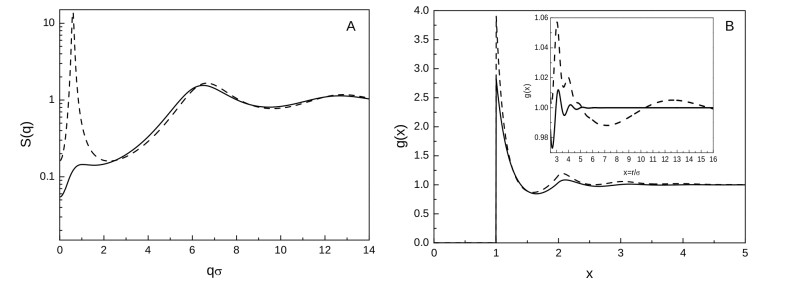









 DownLoad:
DownLoad:
